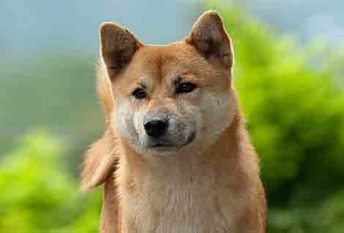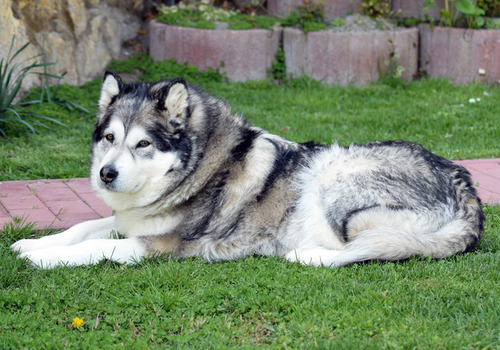Malamutes shed daily, so regular brushing two to three times per week is necessary. Twice a year the Malamute will shed heavily, and they lose their fur in clumps. Using a heavier brush during season changes can keep the mess to a minimum.
The rest is basic care. Trim the nails as needed, usually once a month. Brush the teeth frequently for good overall health and fresh breath. Check the ears weekly for dirt, redness or a bad odor that can indicate an infection. If the ears look dirty, wipe them out with a cotton ball dampened with a gentle ear cleaner recommended by your veterinarian. Introduce your Malamute to grooming at an early age so he will accept it gracefully.
Your active Alaskan Malamute needs exercise and physical activity in order to live a happy, healthy life. This breed was used for pulling heavy sleds in the Arctic, which conditioned them to be kept busy.
The minimum amount of time spent exercising should be about one hour. Always use a leash when walking or running with your Alaskan Malamute, as it cannot be trusted around smaller dogs or animals. A large yard is recommended, but keep a close eye out on your dog because this breed enjoys enjoy digging and exploring new scenery.
TheAlaskan Malamute can do well on high-quality dog food, whether commercially manufactured or home-prepared with your veterinarian's supervision and approval.
Any diet should be appropriate to the dog’s age (puppy, adult, or senior). Some dogs are prone to gettingoverweight, so watch your dog’s calorie consumption and weight level.
Treatscan be an important aid in training, but giving too many can cause obesity. Learn about whichhuman foodsare safe for dogs, and which are not. Check with your vet if you have any concerns about your dog’s weight or diet.Clean, fresh water should be available at all times.
The average life span of the Alaskan Malamute is 10 to 12 years. Breed health concerns may include autoimmune hemolytic anemia,bloat,cancer, chondrodysplasia (dwarfism),diabetes, epilepsy, eye problems (refractorycorneal ulceration, corneal dystrophy,glaucoma,cataracts, day blindness and generalizedprogressive retinal atrophy),hip dysplasia,hypothyroidism, and skin problems such as generalized demodicosis and follicular dysplasia. Malamutes also can have a genetic defect causing malabsorption of zinc, which leads to skin lesions despite adequate levels of zinc in their diet.
A highly intelligent breed, the Alaskan Malamute has excellent training qualities, including dependability, responsibility, cleverness, and high energy. This dog was bred for hauling and working hard, which makes them dependable and responsible, great qualities when it comes to training.
Think of training as an energy outlet for this dog. Sign up for obedience training classes and your Alaskan Malamute will excel at them. Instead of formal training, try to make lessons fun, and involve other family members in the process.
Since these dogs are very active, you’ll need to train your Alaskan Malamute as to how to behave and what is not considered acceptable behavior. Keep training positive and rewarding, and don’t use negative or harsh treatment to get the results you want.
You may have a hard time housetraining your Alaskan Malamute. This breed tends to be hard to train in this area, so it will take added persistence and patience on your part to help your dog master this habit.













